
Despite centuries of attempts to precipitate dolomite in the laboratory, the geologically abundant mineral has remained stubbornly mysterious. But now an international collaboration of researchers believes it has discovered the key to dolomite formation in the lab – cycles of saturation.
Discovered by the French naturalist Déodat de Dolomieu over 200 years ago, dolomite (CaMg(CO3)2) is a calcium–magnesium carbonate mineral. Crystals can usually be grown in the lab from solutions that are more highly saturated than normally possible – supersaturated solutions. However, although thermodynamically stable, and geologically widespread, dolomite stubbornly refuses to grow in the lab at near ambient conditions from supersaturated solutions. The so-called dolomite problem ‘represents a fundamental mystery in crystal growth theory’ according to Wenhao Sun, a materials scientist at the University of Michigan, US.
Using atomistic simulations, Sun and his team have developed a mechanism for dolomite formation and outlined a solution to the dolomite problem. They first used density functional theory (DFT) to compare the nucleation barrier of dolomite formation with that of other carbonate minerals. Their finding that it is similar in magnitude to that of calcite and aragonite implies that dolomite precipitation is not nucleation limited, but growth limited. In other words, dolomite isn’t failing to form under laboratory conditions due to difficulties getting started, but rather something later in the process.
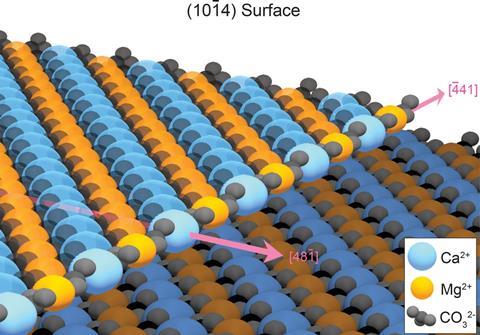
Dolomite crystals are highly ordered, exhibiting layers of calcium and magnesium separated by layers of carbonate anions. By examining the growth edge of dolomite crystals, Sun had what he described as the first eureka moment. ‘The growth edge was ordered Mg/Ca/Mg/Ca/etc. There is no way that ions from solution could come in with that perfect repeating order! Entropy would cause disordering.’ The research team calculated that the formation of ordered dolomite layers onto a disordered ‘protodolomite’ substrate is energetically unfavourable, and self-limited after a few layers.
The second eureka moment, explains Sun, came when his graduate student and first author, Joonsoo Kim, highlighted a video from Frances Ross at the Massachusetts Institute of Technology at a lab meeting. Ross showed that by pulsing the voltage during the electrodeposition of copper, instead of fractal dendrites with high chemical potentials, she got flat planar growth. It occurred to the team that by cycling from supersaturation to undersaturation and back again, the disordered regions of protodolomite would dissolve faster than the ordered ones, and an ordered dolomite surface would gradually emerge. ‘I remember literally jumping up out of my seat and clapping at this moment during group meeting. I think I may have scared my students. It was definitely a classic Eureka moment!’ recounts Sun.
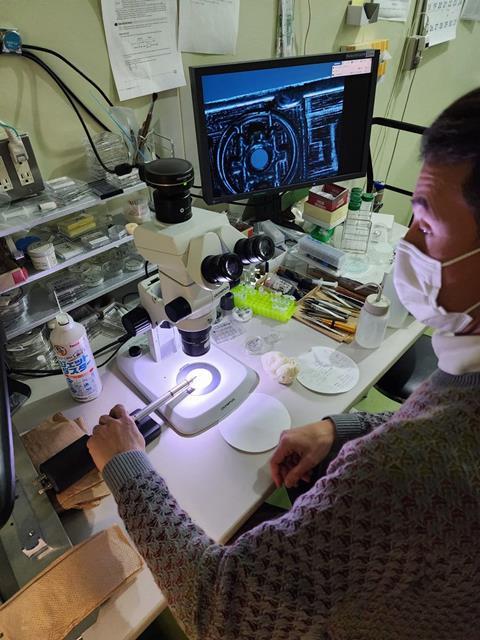
To experimentally confirm their hypothesis, Sun reached out to Yuki Kimura, a specialist in crystal-growth interferometry at Hokkaido University in Japan. He suggested using in situ liquid cell transmission electron microscopy with a pulsing electron beam to lower the pH and trigger dissolution, a solution Sun says was ‘so elegant’. The team placed a 3μm seed of crystalline dolomite in a tiny fluid cell filled with a supersaturated solution of calcium–magnesium carbonate. After 3840 fluctuations of the electron beam over 128 minutes, they directly observed bulk dolomite growth of about 200nm. This corresponds to growing around 300 layers of dolomite – five was the most that had ever been grown in the lab before.
‘It is a bit paradoxical to dissolve your sample to promote better crystal growth,’ explains Sun. ‘But the dolomite story teaches us that defects in materials are high-energy, and dissolution will eliminate these high-energy defective regions first.’
Some scientists remain sceptical of the applicability of these findings to nature. ‘Even if they were able to synthesise an ordered dolomite in the experimental phase of their study, the cycling of the saturation state of the precipitating solution would be very hard to invoke for the origin of many (most) massive dolomite units in geological history,’ says Jay Gregg, an emeritus professor of geology at Oklahoma State University. But Sun disagrees. ‘The geological record of where modern dolomite forms in nature agrees phenomenologically with the concept of cycles of dissolution/reprecipitation,’ he notes. ‘[Joonsoo] found that all of the dolomite formation places are associated with cycles of flooding and then evaporation – which fit our supersaturation fluctuation idea perfectly.’
Jennifer Roberts, a geologist at the University of Kansas, US, also believes that this experimental evidence can translate to natural settings. ‘The theoretical work is sound, and they make legitimate connections to complex environmental settings,’ she says. ‘Challenging the prevailing view that persistent supersaturation is required is particularly compelling as it translates to modern settings where we observe seasonal or episodic supersaturation/undersaturation.’
Sun hopes that their work will stimulate further attempts to test their ideas. ‘What we have provided in our work is a mechanism, and a first experimental attempt to validate the mechanism. It is certainly not the final and definitive experiment.’ He also remains open to other possible formation methods. ‘Our theory is … not necessarily the only mechanism by which dolomite forms but is a viable and sensible pathway.’
References
J Kim et al, Science, 2023, 382, 915 (DOI: 10.1126/science.adi3690)


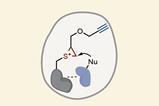




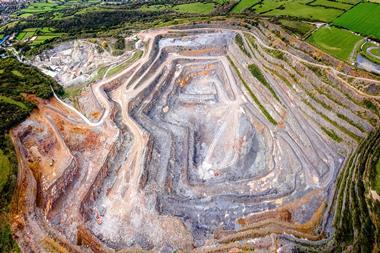

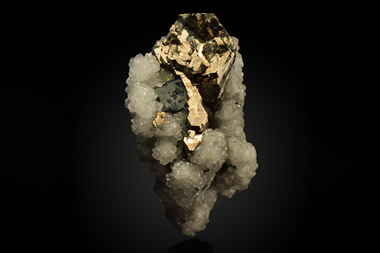







No comments yet